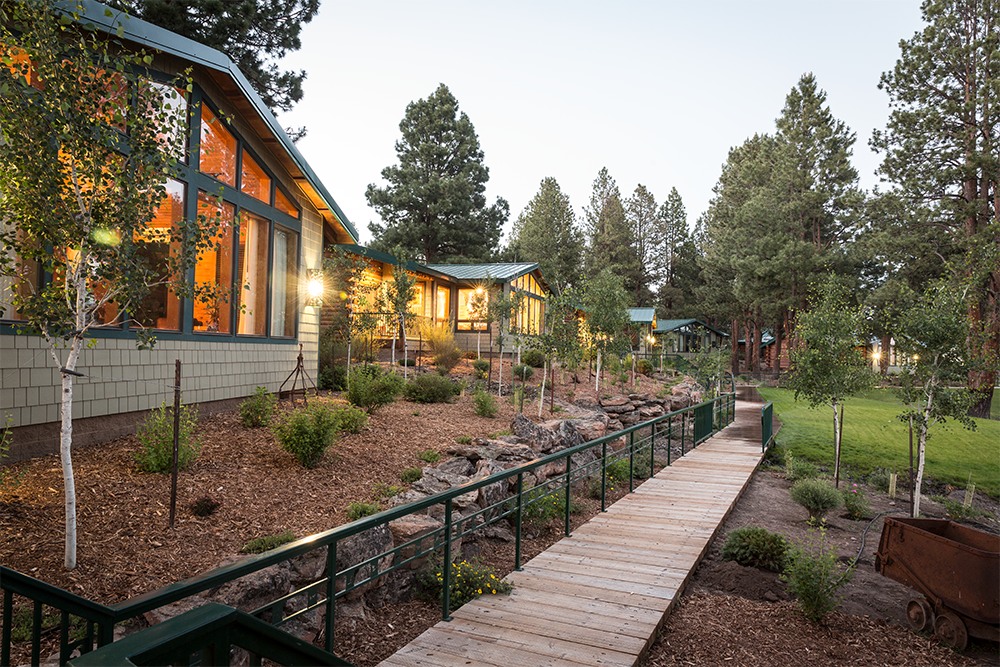When you live on a 140,000-acre ranch in Oregon’s high desert, you basically live by one motto:
“If you can’t fix it,’’ said Tygh Campbell, ’embrace it.’’
Campbell and his family certainly have embraced the great outdoors of eastern Oregon. HIs father, Dr. Scott Campbell, in 2007 bought the ranch, which includes more than 60 square miles of deeded property; 6,000 acres of mountain meadows; 14,000 acres of Ponderosa Pine forest; 20 miles of the Silvies River; and more than 20 named creeks and drainages.
Silvies Valley Ranch also includes 5,000 acres of resort amenities, including cabins and suites; five golf courses; coach and RV park; fishing, horseback riding, whiskey tasting, goat herding. Well… you get the idea.

This year, Silvies Valley Ranch is going deeper into the “If you can’t fix it, embrace it’’ philosophy with the development of a community of luxury eco-cabins, each of which will be constructed completely off the grid.
Each of the cabins will be equipped with passive heating and cooling and solar panels connected to lithium-ion batteries that power the entire cabin. They will also have a built-in greywater system that feeds the natural vegetation around the cabin.
“Out here we don’t have access to any more power. The grid is tapped out,’’ Tygh Campbell said. “The only way around it is to build these cabins completely off the grid.’’
To accomplish that goal, the Campbells are building multiples spec models of cabins – ranging between 3,000 and 5,000 square feet, that aren’t connected to anything.
“They run on a really cool micro-grid system,’’ said Tygh Campbell, vice president of real estate at Silvies Valley Ranch. “Each house functions as its own micro grid.’’
That is, each cabin has solar panels that charge the batteries, with backup propane generator, just in case.
“Lithium-ion batteries are great because they are zero maintenance,’’ Campbell said. “You don’t ever have to fill them with water. They’re completely sealed so you have them indoors.’’
Campbell lives in a 5,000 square-foot cabin he built simply to test the technologies.
“We can leave on every light in the cabin and never kick in the generator. But there is a backup generator, because you can’t run the entire cabin like that throughout the night – although you can get away with it longer than I want to be up.’’
“The cabins are completely stand-alone. For communication, like WiFi and TV, everything is beamed via microwaves directly into the cabin. So, even though there is not a wire connecting it, you still have high-speed Internet.’’
From concept to spec cabin, Campbell said, was an approximate four-year process.
“There’s a lot of things in a normal house you don’t think about that you have to put into an off-grid cabin, especially when it’s 5,000 square feet. The biggest power consuming things are any time you heat and cool. So, the cabins have central air that runs on propane. For cooling, they each have passive cooling. Because we are 5,000 feet (elevation) and it might be 100 degrees during the day, it’s 40 or 50 degrees at night.
“So, the cabins are designed to open up the lower level windows. All the skylights are active, so if you kick those open it sucks all the hot air out of the cabinThen the first thing in the morning is you flip a switch, everything closes, and it stays 60 degrees throughout the day.’’
Pricing of the cabins is $300,000 to $800,000 for the build site, Campbell says, and the move-in price is expected to be in the range of $1.8 million. The Ranch already has sold three cabins, according to Campbell, without officially yet putting any cabin on market.
“Those were from people who just wouldn’t take ‘no’ for an answer.’’
And those who want to embrace “off the grid.’’
Feature Photo:The Retreat at Silvies Valley Ranch (Silvies Valley Ranch)
#silviesvalleyranch #golfresorts #oregonresorts #conservation #golf #goatcaddies #offthegrid #highdesert #spikeongolfandtravel

